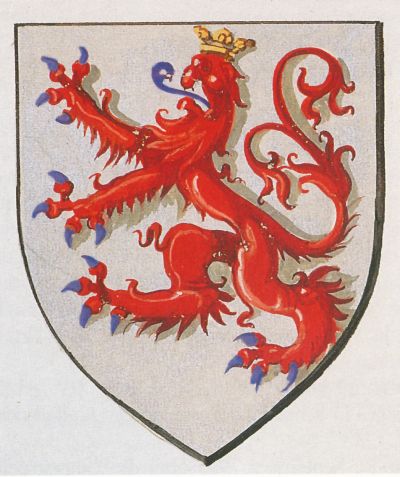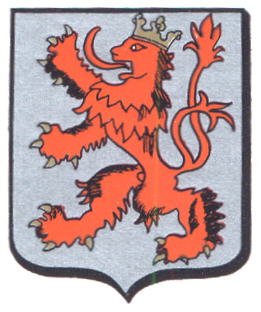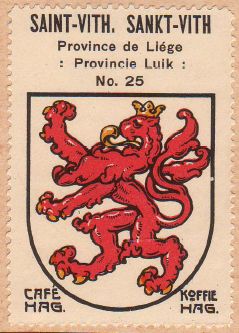Sankt Vith: Difference between revisions
Knorrepoes (talk | contribs) No edit summary |
Knorrepoes (talk | contribs) No edit summary |
||
| Line 8: | Line 8: | ||
Province : [[Liège (province)|Liège]]<br/> | Province : [[Liège (province)|Liège]]<br/> | ||
Additions : 1977 Crombach, Lommersweiler, Recht, | Additions : 1977 Crombach, Lommersweiler, Recht, Schönberg | ||
[[File:st-vith.jpg|center]] | [[File:st-vith.jpg|center]] | ||
Revision as of 14:26, 15 January 2015
| Heraldry of the World Civic heraldry of Belgium - Belgische Gemeentewapens / Armorial de Belgique |
SANKT VITH
Province : Liège
Additions : 1977 Crombach, Lommersweiler, Recht, Schönberg
Official blazon
- (1925) D'argent au lion de gueules à la queue fourchue couronné et armé d'or.
- (1979) In Silber ein goldgekrönter, blaubewehrter und -bezungter zweischwänziger roter Löwe.
Origin/meaning
The arms were granted on July 3, 1925 and slightly changed on June 8, 1979.
The arms show the lion of the family Fauquemont. The Lords of Fauquemont either descended from the Lords of Heinsberg, who used a silver lion on a red shield, or from the Dukes of Limburg, who used a red lion on a silver field. The oldest known use of the double-tailed lion dates from 1342 on a seal form Jean de Fauquemont. The Lords of Fauquemont were lords of Saint Vith already in the 12th century. Later the town was a possession of the Counts of Vianden and the Princes of Oranje-Nassau.
When the arms were granted the lion was officially described as the lion of Fauquemont-Limburg, and shown as the lion of Limburg.
| The arms from 1925 |
The arms in the Koffie Hag/Café Hag albums +/- 1930 |
Contact and Support
Partners:
Your logo here ?
Contact us
© since 1995, Heraldry of the World, Ralf Hartemink 
Index of the site
Literature : Servais, 1955













